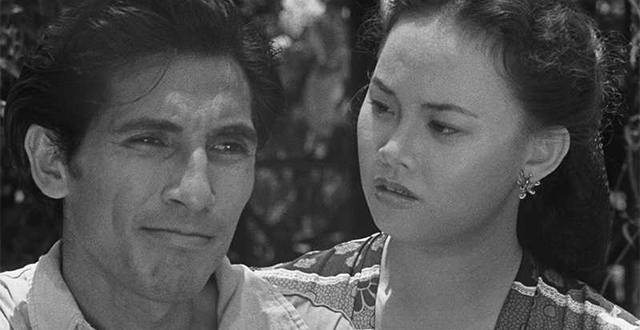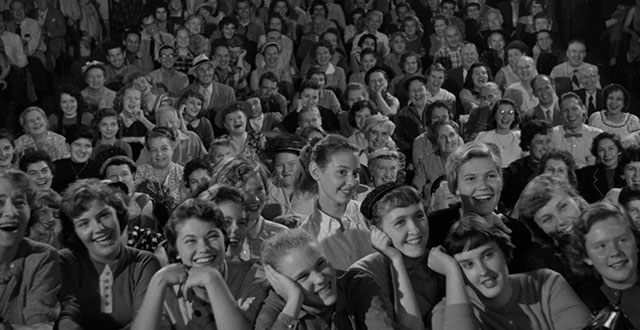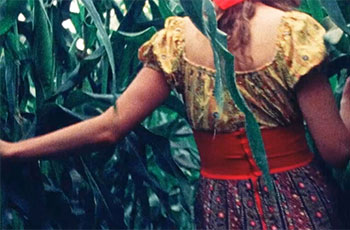News
Immerse Yourself in Martin Scorsese’s World Cinema Project #3
Brian Tellerico

Martin Scorsese’s World Cinema Project began in 2007, with a commitment to restoring and releasing films from parts of the world where filmmaking was difficult for political and cultural reasons. While some of these restorations resulted in films or at least works by filmmakers who had been recognized, some never would have found their way to a modern audience without WCP. As streaming service gatekeepers seem to be reducing the chances for people to see international cinema more than enabling it—yes, the Criterion Channel has a healthy foreign selection, and so does Kanopy and Mubi, but the “major” streamers like Netflix and Hulu are depressingly thin—releases like Criterion’s “World Cinema Project #3” feel more and more like a gift. Six films restored by the WCP are included in this multi-disc set from Criterion, including two films per Blu-ray and single DVDs for each title. Each release is accompanied by an informative introduction by Martin Scorsese, briefly detailing the history of the film, and one only wishes they were longer than two minutes. But Scorsese doesn’t want to draw focus here, and he allows this diverse, international array of cinema to speak for itself.
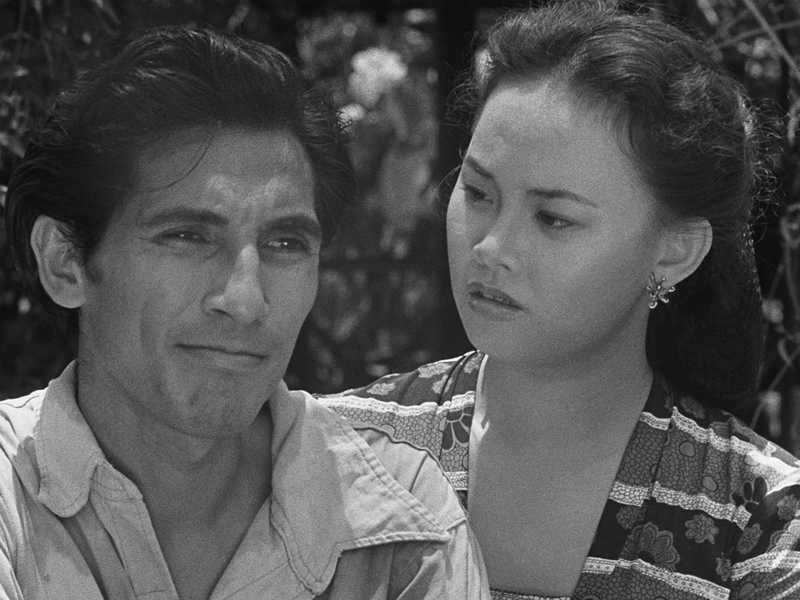
Take “After the Curfew,” recognized as the first Indonesian film ever made. Released in 1954, the movie by Usmar Ismail spoke to the history of its country, telling the story of a former freedom fighter who can’t readjust to civilian life after the revolution that granted Indonesia independence from the Netherlands. This film really exemplifies the overall purpose of the World Cinema Project in so many ways. For one, it is deeply specific to its time and place, telling a story of postcolonialism in Indonesia in way that an outsider never could. It has a cultural specificity that feels essential to the films that WCP and Criterion chooses for these releases. But it is also not merely a historical document. Ismail’s use of light and shadow doesn’t reflect a culture crawling before it can walk in cinematic terms as much as a director who clearly watched works from around the world to adapt their visual language to his own purposes. It’s a fascinating piece of work.
So is the formally breathtaking “Lucia,” a Cuban film from 1968 that runs nearly three hours, telling a triptych story of three women named Lucia across three distinct time periods in the history of the country. Director Humberto Solás tackles the tumultuous history of his people by dropping viewers into 1895, 1932, and the 1960s, detailing how much progress comes through pain and often at the cost of humanity. It is a visually stunning movie—each section has a different visual language—and sometimes shockingly surreal, playing out unlike anything Criterion has released in a long time. That’s another benefit of these releases—they pull a collection that’s often defined by white, European filmmakers to other parts of the world.

Héctor Babenco is probably the best known of the filmmakers in this set, as the Argentinian filmmaker would go on to direct “Kiss of the Spider Woman,” “Ironweed,” and “At Play in the Fields of the Lord.” Even the film included here in the set received the widest international release of the six, 1980’s "Pixote,” a film that Roger Ebert considered a Great Movie, writing, “"Pixote" stands alone in his work, a rough, unblinking look at lives no human being should be required to lead. And the eyes of Fernando Ramos da Silva, his doomed young actor, regard us from the screen not in hurt, not in accusation, not in regret—but simply in acceptance of a desolate daily reality.
If Babenco’s film is well-known when compared to other films in the WCP, its Blu-ray disc-mate is the opposite. Even Scorsese himself, one of the smartest people alive when it comes to world cinema, admits he hadn’t seen or considered Juan Bustillo Oro’s “Dos Monjes” before this project started, but the WCP went to historians around the world asking for suggestions. Oro's movie is something else, one of the first Mexican sound films, and a melodrama that draws heavily from the German Expressionism movement while also echoing Universal monster movies being made around the same time. Released in 1934, it’s the story of a new monk at a cloister who is recognized and despised by one of the brothers there. The film then shifts to two flashbacks of the same story, long before “Rashomon,” to tell the story of their shared past. It’s a visually striking, surreal experience, and maybe my favorite film in this set.
Finally, “Martin Scorsese’s World Cinema Project #3” travels to the incredibly distinct cultures of Mauritania and Iran for the last disc in this set. Med Hondo’s “Soleil Ô” was released in 1970 and reflects its Mauritanian director’s culture and politics at the time through the story of an immigrant who travels from West Africa to Paris trying to find work, but only finding aggression. And then there’s Bahram Beyzai’s “Downpour,” a 1972 work credited with helping start the Iranian New Wave. Restored from the only surviving print, it’s another example of how the World Cinema Project isn’t just bringing films to people who might not otherwise have a chance to see them but actually rescuing and salvaging cinema from around the world. May they never stop.
Get your copy of “Martin Scorsese’s World Cinema Project #3” here. Note: some of these films are also available on the Criterion Channel.
COMMEMORATING 30 YEARS OF TFF
For decades now, there has been a stream of citations and lengthy magazine articles on the topical relevance of A Face in the Crowd, Elia Kazan and Budd Schulberg’s 1957 follow-up to On the Waterfront. I can’t recall a moment in the last 30 years that this film, about the meteoric media-fueled rise of a folksy southern guitar-playing “personality” named Lonesome Rhodes (Andy Griffith in his film debut), hasn’t been deemed “prescient.” The crux of the matter is the clear link that Kazan and Schulberg drew between commercially driven mass media popularity and political power, five years before Daniel Boorstin’s book The Image: A Guide to Pseudo-Events in America, 7 years before Marshall McLuhan’s Understanding Media and 11 years before Joe McGinnis’s The Selling of the President. In 1976, when Ronald Reagan took his first shot at the presidency, public perception hadn’t quite caught up: the idea of a former movie star turned commander-in-chief still seemed borderline outlandish to many people. After 1980, there were calls for Gregory Peck to run for president (a role he wound up playing in a crazy mid-80s film called Amazing Grace and Chuck). Now, we all have the language of “imaging,” “branding,” “messaging,” “talking points” and “online communities” shoved at us at all times from multiple directions. Many people seem to be caught between embracing the figures that are the savviest at manipulating the tools of image promotion and the ones who appear to cut through it all and speak directly.
Under the current circumstances, A Face in the Crowd, restored by UCLA in collaboration with The Film Foundation, still seems prescient. But now, it’s the terrible sadness of megalomania that resonates, the bottomless longing for love, validation and acclimation. I look forward to the moment when this film is no longer politically relevant. And what has always burned most brightly is the element that Kazan prized the most: the relationship between Patricia Neal and Andy Griffith. Because at its core, A Face in the Crowd is the story of a woman who is drawn to and soon betrayed and finally horrified by her own creation.
- Kent Jones
Follow us on Instagram, and Twitter!
A FACE IN THE CROWD (1957, d. Elia Kazan)
Restored by UCLA Film & Television Archive in cooperation with Castle Hill Productions, Inc. with funding provided by the Hollywood Foreign Press Association and The Film Foundation.
ON THE WATERFRONT (1954, d. Elia Kazan)
Preserved by The Museum of Modern Art with finding provided by The Film Foundation.
LFF 2020 #1: Chess of the Wind (Shatranj-e baad, Iran 1976)
Roy Stafford
My first screening of this year’s festival, which is primarily online, was one of three ‘free’ archive screenings. This restoration of a film deliberately marginalised by critics and industry officials in 1976 and banned after the Islamic Revolution in 1979 came about only when the original reels of film were found by the director’s son in a street market in 2015. Up until then only heavily degraded VHS copies were available after the director Mohammad Reza Aslani was allowed back into the industry limelight in the late 1990s, mainly as a documentary maker.
The presentation was via BFI Player with a short introduction by Robin Baker and the director’s daughter Gita, a film scholar, and then a pre-recorded Q&A from the couple (in a split screen) after the screening. Everything worked smoothly. I wasn’t sure what to expect from the film. The pre-publicity suggested “the Persian lovechild of Tennessee Williams and Ingmar Bergman”. I thought this sounded unlikely and as the film rolled I thought I recognised a number of possible global links. In particular, I was reminded of Indian, Chinese, Korean and Japanese films with narratives featuring a feudal household experiencing a moment of decline and change in a grand house while outside a group of working-class women are constantly washing clothes in the large pond within a courtyard. They seem to play the role of a Greek chorus discussing all the goings-on and the sins of the rich. I was reminded of Almodóvar’s Volver and the women dressing graves among other films where groups of women are washing together. In the Q&A that followed, Gita told us that her father was influenced by two cinéastes, Visconti, especially re The Leopard (1963) and Bresson (mainly for the way he handled actors). The Leopard certainly makes sense as a narrative about aristocratic decline in the face of revolutionary forces. I don’t know Bresson well enough to comment on that reference.
The action in the narrative is all inside the house, apart from the women and the last surprising shot of the film. The woman who owned the house has just died and now her second husband has assumed control. But he has problems. Also in the house is his stepdaughter who is confined to a wheelchair and seems to be not in good health generally. The other two residents are two brothers, his nephews(?) who he has ‘taken in’. One of them wishes to marry the stepdaughter. There are several servants for the house as well – an elderly nanny, a young woman who is the stepdaughter’s maid and some kitchen staff. Finally there are two visitors, an elderly doctor and a ‘commissar’, (a police officer?). The audience is likely to wonder when the story is set. The only clue I could see was the commissar’s uniform which for me suggested the 1920s/30s. In the Q&A Gita told us that in the 1920s there were women who made quite dramatic feminist statements and that the stepdaughter repeats one of these statements in her description of a dream she has. The interior of the house in terms of layout and decoration suggests a period possibly a little earlier. Again, the final sequence in the film will provide some answers.
In genre terms this is a gothic melodrama that moves towards violence and horror. There is an element from Clouzot’s Les diaboliques (France 1955) and the house reminded me of The Handmaiden (South Korea 2016) which also shares other elements with this film. The fact that the film so shocked and confounded Iranian critics in 1976 probably says more about the state of cinema and culture at the end of the Shah’s regime than it does about the film itself. Those critics would at least have had more understanding of the details of the mise en scène of the scenes in the house, including the paintings on the walls and the domestic procedures such as the laying of the dinner on the richly carpeted floor and the bedroom with its raised sleeping platform. The stepdaughter has a very beautiful carved wooden wheelchair and how she gets about the house, even with her maid pushing the chair is something of a mystery since there is a grand staircase and a cellar to navigate. The dialogue too is carefully written to include cultural references that might be inaccessible to non-Iranians but none of this matters so much in a film that is so visually rich and which comments on Iranian history and society so directly via those elements borrowed from global cinema. The final sequence of the film is also perfectly handled so that we go back and re-think some of the earlier scenes. In the Q&A, Robin Baker asked the almost unavoidable question about Shakespeare and received the response that indeed the director was interested in Shakespeare and that perhaps this was a version of hamlet with gender reversals? You can probably guess from that remark that all does not end well.
Music, camerawork, mise en scène, performance all combine to make this a visual treat. The film is still available free, up until 15.00 BST on Tuesday 13 October, on BFI Player in the UK. It was restored in 4K in 2020 by The Film Foundation’s World Cinema Project and Fondazione Cineteca di Bologna from the original 35mm camera and sound negatives at L’Image Retrouvée laboratory (Paris) in collaboration with Mohammad Reza Aslani and Gita Aslani Shahrestani. Presumably this will later become available for wider distribution and cinema screenings. Do look out for it. On a big cinema screen this should look amazing.
The Importance of Film Preservation and The Film Foundation
Kim Luperi
“You react against the devaluation of cinema and movies by showing up,” Martin Scorsese remarked after accepting the inaugural Robert Osborne Award at the 2018 TCM Classic Film Festival. Scorsese’s nonprofit organization, The Film Foundation (TFF), has been showing up by promoting the preservation of our cinematic heritage for 30 years. This month, TCM salutes that anniversary by showcasing five evenings of TFF-supported restorations. Recently, I had the opportunity to ask the TFF team about their history and some of the unique programs and projects they’ve created and participated in throughout the years.
TFF officially launched in 1990, but the idea formed years before, evolving from studio meetings Scorsese took in the late 1980s with UCLA Film & Television Archive director Robert Rosen to advocate for protecting studios’ libraries “title by title.” Once TFF opened its doors, Scorsese and various board members (including filmmakers such as Francis Ford Coppola and George Lucas), hit the ground running to secure funds and foster projects between studios and archives.
TFF worked to spread the word about the importance of preservation early on, collaborating on events like AMC’s 1993 on-air Film Preservation Festival, which featured interviews with archivists and showcased restorations like BECKY SHARP (’35), the first feature shot in three-strip Technicolor.
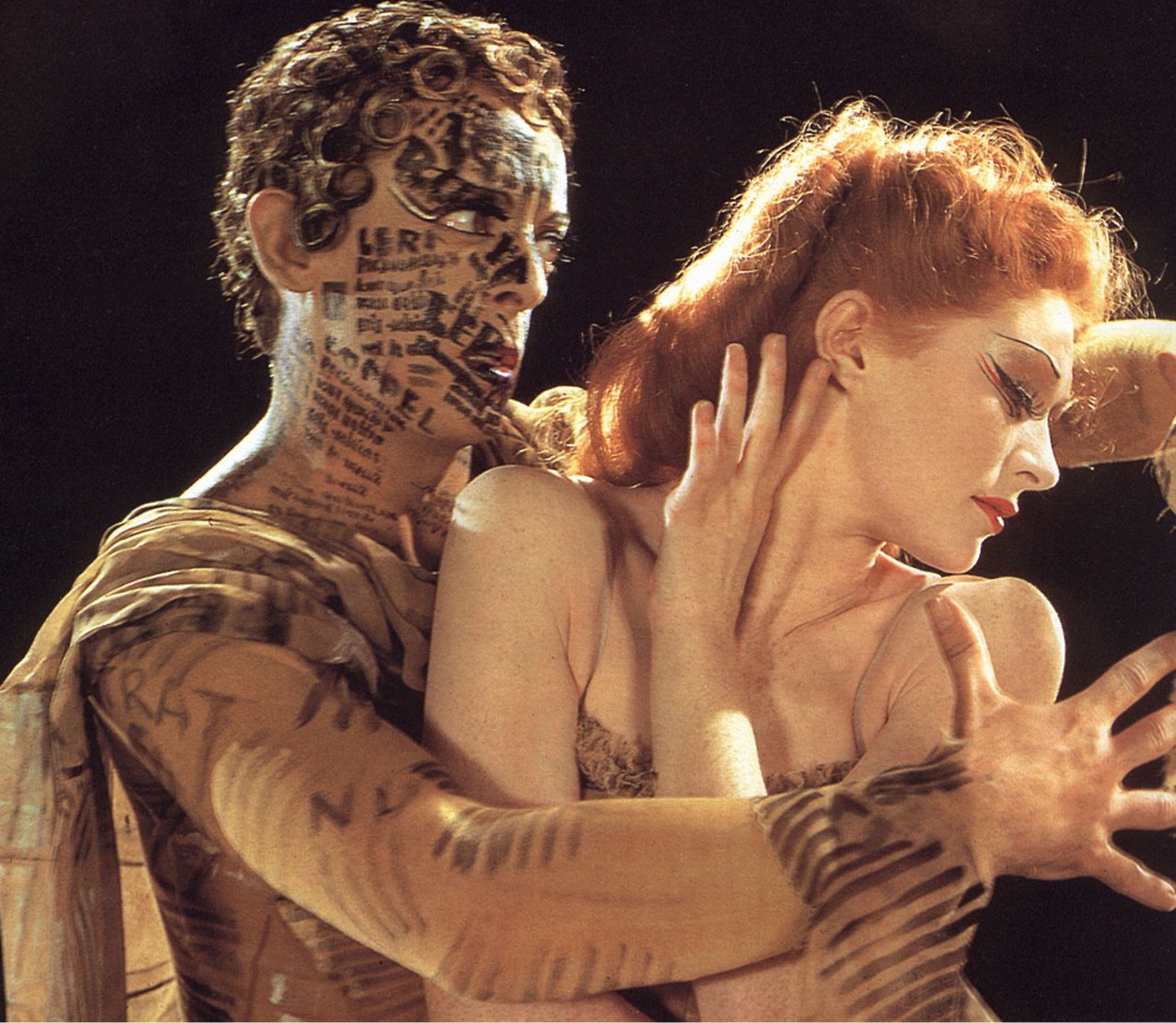
Technology now allows for photochemical and digital restoration practices, both of which TFF supports. It seems as if each project has its own tale, from TFF’s first digital restoration, in 2006, of Michael Powell and Emeric Pressburger’s THE RED SHOES (’48), a Technicolor film so damaged that it couldn’t have been corrected without digital tools, to Barbara Loden’s directorial debut and swansong WANDA (’70), for which the original 16mm camera negative was triumphantly saved from a lab in the process of closing, one day away from being destroyed.
With so many movies out there, it’s impossible to save them all. So, how are TFF’s projects chosen? While some archives suggest culturally essential titles in need of attention, other little-known titles are proposed by Scorsese or board members. TFF facilitates and promotes the resulting restorations, which are funded and carried out by studios and various rightsholders.
One project the team highlighted was Marcel Ophüls’ 1976 historic 278-minute documentary THE MEMORY OF JUSTICE, restored in partnership with the Academy Film Archive and Paramount Pictures. The 10-year process remains unprecedented in TFF’s history, and it involved a vast amount of rights clearances for exhibition purposes – a total of 386 clips and 24 music cues! Furthermore, when the original French, German and English recordings were located, Ophüls wanted to use them for the restoration instead of the English dubbing that viewers heard in 1976; thus, subtitles in all three languages were crafted, which the team said gave the film “new power and authenticity.”

TCM’s salute, spotlighting classics such as DODSWORTH (’36) and DETOUR (’45), represents a small percentage of TFF’s work. The organization’s goal stretches far and wide. In 30 years, they’ve aided in the restoration of over 850 silent and sound features, shorts, documentaries, avant-garde, independent and home movies from around the globe. In seeking to save work from underrepresented genres and filmmakers, TFF has supported the restoration of independent movies like Bill Gunn’s GANJA & HESS (’73), while also creating and funding the Avant-Garde Masters Grant in 2003 in partnership with the National Film Preservation Foundation to save experimental works that might otherwise fly under the radar, like several from women and LBGTQ+ directors.
With a worldwide lens, Scorsese started the World Cinema Project (WCP) in 2007 to help preserve film heritage in countries with limited archival resources, where movies face a higher risk of being lost forever. So far, the initiative has helped restore 42 films from 25 countries, and their exhibition and distribution, whether at global film festivals, on DVD or streaming, give these pictures new life by allowing audiences the opportunity to discover them. “It’s difficult for a movie to be any part of film history when it is unknown,” the team explained.
TFF’s most recent World Cinema Project restoration, in partnership with Cineteca di Bologna, was Mohammad Reza Aslani’s long thought lost Iranian film CHESS OF THE WIND (’76). The Islamic regime banned Aslani’s picture after its sole screening at the Tehran International Film Festival, but luckily, the original negatives were uncovered in a Tehran shop in 2015 and returned to the director, who helped oversee the restoration with his daughter. After being suppressed for so many years, the film has acquired new admirers at festivals worldwide thanks to this restoration.

In addition to salvaging gems from our cinematic heritage, TFF also supports a variety of educational initiatives. Not only has the organization presented preservation and restoration workshops around the globe, but they’ve also helped instill a respect for cinema through their free cross-curricular educational program The Story of Movies, established in 2005. As the first series crafted by film professionals in conjunction with educators, The Story of Movies not only teaches the cultural and historic importance of the medium but also guides students on how to apply critical thinking skills and “read” a film. In having reached about 10 million students across the nation (and with an international program in China), The Story of Movies continues to enrich learners’ minds and enlighten future filmmakers and scholars.
At year 30, The Film Foundation remains fiercely passionate about its purpose and intimately in touch with the challenges the industry faces. As preservation is a constant process, the team looks ahead with resolve and confidence, confiding in me that they’re “up for the challenge and excited to continue to discover great films that were feared lost.”
